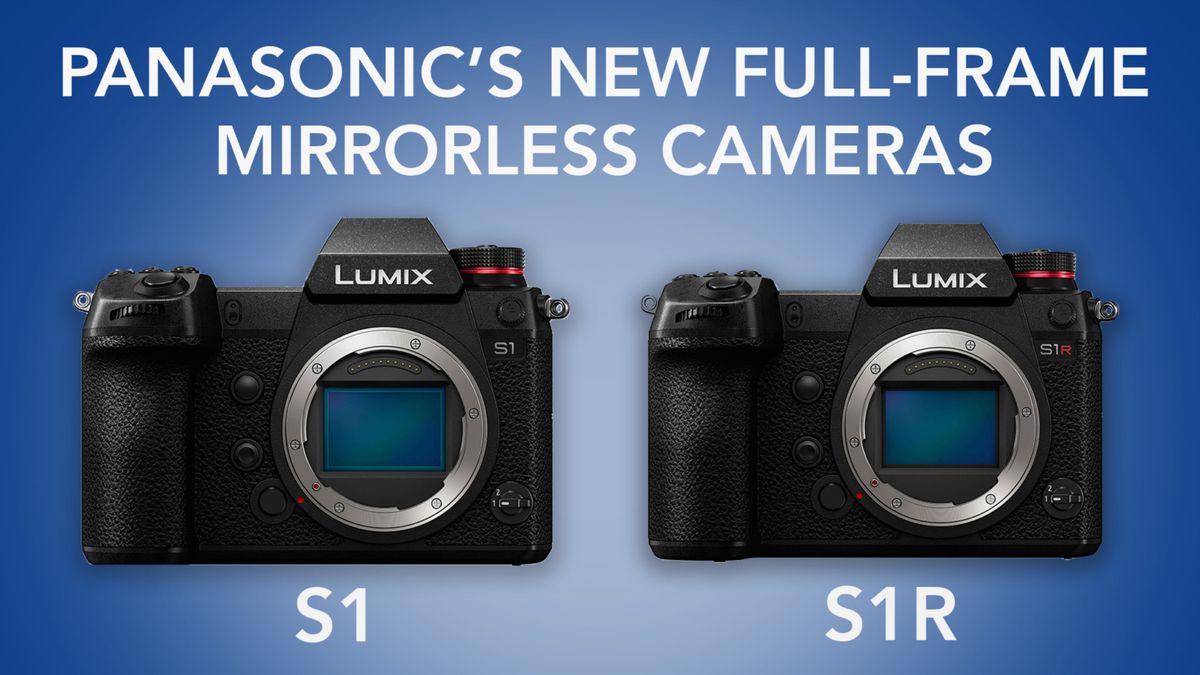
So they are releasing two of their cameras at the same time, one of them is the S1R, which is their higher resolution model at 47mp and the other is the S1, which is a good mid-range mirrorless camera.
Panasonic Lumix S1R
Let’s start with the S1R, this camera is geared towards still photographers.
Photo Settings
The S1R shoots at 9fps which is pretty fast. It has a high-resolution mode, which uses the sensor shifting in the internal stabilization to shift the sensor while you are taking the photo. This could be great for landscape photographers. This feels like the a7rIII because it has great specs for photos and videography.
Video Specs
This camera offers 4k at 60fps, which is pretty unique. It only offers 8-bit 420 internally, but it’s 150mb/second and it’s a 1.5 crop. It has image stabilization as well which makes it a solid video camera.
Autofocus System
DFD is a contrast-based autofocusing system, so they aren’t using the sensor readout for the phase detection autofocus like most of their competitors. They have 225 autofocus points, which isn’t the best, but it’s worked for them in previous cameras like the GH5.
Storage Card Settings
It uses the XDQ cards, it has a dual memory card slot for the XQD and SD cards. It has full weather sealing as well as a triple axis flip out screen.
Lens Options
The camera has a Leica M mount which is smart because people can buy existing lenses to use with the camera. We’ve talked in the past about how mirrorless cameras struggle because there aren’t enough lenses for people to shoot with.
New Lenses!
Panasonic is also introducing new L Mount lenses with their new camera. The 50mm f1.4, the 24-105mm f4, 70-200 f4 which is interesting that they chose f4.
Inexpensive?
Let’s think twice. This camera comes in at $3,700 which is a pricey body for the features. It has a pretty good battery life because it is using larger batteries for a large body.
Panasonic Lumix S1
Now the Lumix S1 is more of the video camera in comparison to the s1r. I’m excited about the affordability of this camera at 2,500, it’s pretty close in price to its competitors.
Video Settings
It’s a 24mp camera, 4k 60fps with 1.5 crop, but it can shoot 4k at 30fps in full-frame so that is pretty good. There is an option to upgrade the camera to shoot in 10bit 422 internally with 30fps and 4k with V-Log. I think in comparison with the A7III it definitely has been video specs and even though you can shoot in S-Log with the Sony I wouldn’t because it just doesn’t have enough data.
I’m really leaning towards this camera just because I need another camera for shooting stills and video. I can shoot with the 10bit 422 at 4k I can use this when I’m traveling and just want a solid camera to shoot.
Both of these cameras will be released on April 4th, so we will be testing these cameras soon and getting you a hands-on review!
Gear Used:
Panasonic Lumix S1
B&H: https://bhpho.to/2IIKYOL
Amazon: https://amzn.to/2IF0QSh
Panasonic Lumix S1R
B&H: https://bhpho.to/2IFUK4g
Amazon: https://amzn.to/2EkuXsK
Panasonic Lumix S PRO 50 f1.4 Lens
B&H: https://bhpho.to/2IHswpE
Amazon: https://amzn.to/2Ua3NeV
Panasonic Lumix S PRO 24-105mm f4
B&H: https://bhpho.to/2IFkjCk
Amazon: https://amzn.to/2Nv15yj
Panasonic Lumix S PRO 70-200 f4
B&H: https://bhpho.to/2IHhhxL
Amazon: https://amzn.to/2VsoaV9
